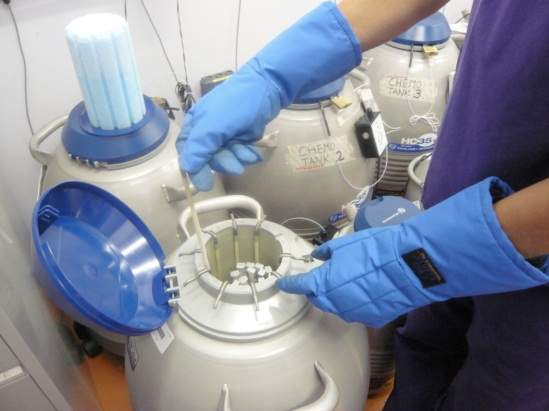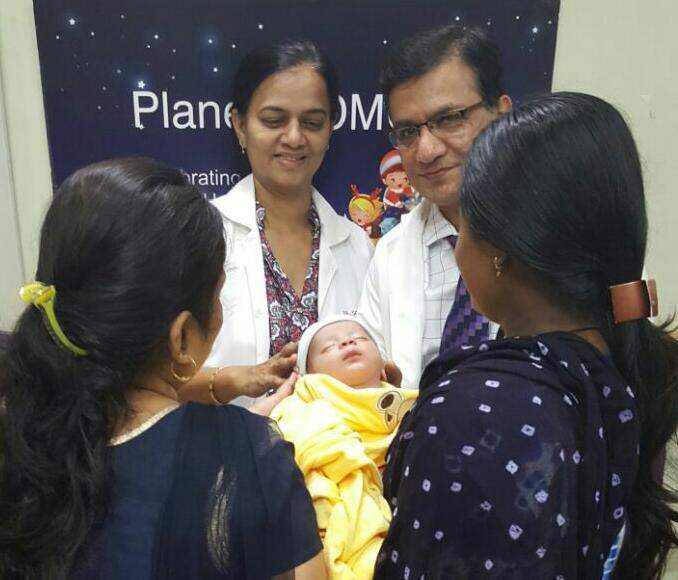Are you having problems getting pregnant? Then you may wonder if in vitro fertilization (IVF) is right for you. Many women get pregnant successfully after trying IVF.
Following are the four primary steps one can expect during the in vitro fertilization process.
Step 1: Ovulation induction
Before and during the in vitro fertilization process, the fertility specialist will monitor your ovaries and the timing of the egg release. The doctor will make sure that your ovaries are producing eggs, and that your hormone levels are normal, among other procedures.
Most women take fertility medicines or hormones at this time to stimulate the ovaries to produce one or more eggs. Having several eggs available for IVF will increase the chances of pregnancy.
If egg production is a problem, one can consult the doctor about donor eggs for the IVF process.
Step 2: Egg retrieval
During this step in the IVF process, pain medication is given to reduce any discomfort. Then a very thin needle is passed through the upper vaginal wall. With the use of vaginal ultrasound, fluid is removed from the follicles under gentle suction.
Immediately after aspiration of the follicle, the oocyte (egg) is isolated from the follicular fluid. The egg is placed in a culture dish containing nutrient media and then transferred to the incubator.
Step 3: Fertilization
The next step of the IVF process is the fertilization of the egg. A sperm sample is secured, either from the partner or a donor, and the most active sperm is mixed with the egg in a special chamber. Sometimes the sperm is directly injected into the egg. Then, the sperm and egg are placed in an incubator and monitored to make sure that a healthy embryo develops.
Step 4: Embryo transfer and Implantation
The final step of the IVF process is the embryo transfer. First, the embryos are examined to select the healthiest ones for transfer. To transfer the embryo(s), a speculum is placed into the vagina and the embryo(s) are transferred via a small plastic tube placed through the cervix into the uterine cavity. After the IVF process is complete, bed rest is often advised for around 24 hours.
The intrauterine insemination (IUI) procedure may help one get pregnant and take home a baby, particularly if you are dealing with infertility.How the IUI procedure worksUnder the IUI procedure, the following steps are to be expected:One may begin taking fertility drugs and the ovulation cycle will be monitored.The partner will provide a sperm sample (or one can obtain donor sperm) that will be specially washed and prepared for the insemination.The doctor will inject the prepared sperm into your uterus.Getting ready for the IUI procedureBefore the intrauterine insemination procedure, one should visit a fertility specialist and have a pre-IUI workup. With this workup, the doctor will check the general health and assess the hormone levels to see if they are in the normal range and also check if the uterus can support a pregnancy.Prior to the IUI procedure, ovulation drugs can be started, while closely monitoring with ultrasound and/or blood testing. This monitoring will confirm the production of healthy eggs and help determine the best timing for the injection of the sperm.One may also take another test that indicates when ovulation is about to happen. Right before ovulation, there is a surge in luteinizing hormone (LH). Ovulation occurs within 1-2 days after the LH surge. The sperm can be injected into your uterus at the optimal time for conception.Preparing sperm for IUIThe sperm sample of the partner will be washed and prepared for the IUI procedure. This washing can remove potentially toxic chemicals possibly present in the sperm that the body may negatively react to.These chemicals can sometimes cause an allergic reaction in women, which could hinder pregnancy. Washing the sperm may also minimize the cramping that sometimes occurs after the IUI procedure.This washing and preparation process also concentrates the sperm into a high volume. This high concentration helps the healthiest, most mobile sperm to reach the egg and helps increase IUI success rates.Inserting sperm during IUIInjecting the prepared sperm into the uterus is quick and virtually painless. This part of the IUI procedure takes 1-2 hours at the most. Here is what to expect:One will be made to lie down on the exam table as for a pelvic exam.The doctor will insert a very small, thin and flexible catheter into the cervix.The washed sperm sample is injected right into the uterus.Since one has to be lying down for a while after the IUI procedure, it is advisable to have a friend, a partner or a good book to read while waiting in the exam room. Having support may always help.Some doctors perform two inseminations with the intrauterine insemination procedure. These are done within a day of each other.Following the IUI procedureAbout a week after ovulation, the progesterone levels will be checked. An ultrasound will be conducted to check the uterine lining. The thickness of the uterine lining will indicate whether the IUI procedure has been effective.
Semen Analysis
Semen analysis, also known as a sperm count test, analyzes the health and viability of a man’s sperm. Semen is the fluid containing sperm (plus other sugar and protein substances) that’s released during male ejaculation. A semen analysis measures three major factors of sperm health:
- the number of sperm
- the shape of the sperm
- the movement of the sperm, also known as “sperm motility”
Two or three separate sperm analysis are conducted to get an idea of sperm’s health. According to the American Association for Clinical Chemistry (AACC), the tests should be conducted at least seven days apart and over the course of two to three months. Sperm counts can vary on a daily basis. Taking an average of the sperm samples can give the most conclusive result.
Just as IVF revolutionized the treatment of female-caused infertility, Intra-cytoplasmic sperm injection (ICSI) was introduced as a major breakthrough in the treatment of male-caused infertility in which a single sperm is directly injected into the body (cytoplasm) of the egg. It is especially useful for patients where the male partner has a very low sperm count (oligozoospermia), poor sperm motility (asthenozoospermia) or too many abnormal sperms (teratozoospermia). Also, in men with obstructive azoospermia (zero sperm counts because of some obstruction in the ducts), sperm can be directly retrieved from the upper part of the testis called the epididymis (PESA-percutaneous epididymal sperm aspiration) and in cases of non-obstructive azoospermia, sperm can be retrieved directly from the testis (TESA – testicular sperm aspiration) and used for ICSI, thus helping them to have their own biological offspring without resort to a donor sperm.
Microsurgical testicular sperm aspiration technique using microscopes and multiple biopsies can be conducted especially in cases of testicular failure with very small testes or high FSH levels (indicating testicular failure) and sperm obtained which are capable of fertilization.
Egg retrieval / Ovum Pick Up
During this step in the IVF process, pain medication is given to reduce any discomfort. Then a very thin needle is passed through the upper vaginal wall. With the use of vaginal ultrasound, fluid is removed from the follicles under gentle suction.
Immediately after aspiration of the follicle, the oocyte (egg) is isolated from the follicular fluid. The egg is placed in a culture dish containing nutrient media and then transferred to the incubator.
Cryopreservation or cryoconservation is a process where organelles, cells, tissues, extracellular matrix, organs or any other biological constructs susceptible to damage caused by unregulated chemical kinetics are preserved by cooling to very low temperatures (typically -80 °C using solid carbon dioxide or -196 °C using liquid nitrogen). At low enough temperatures, any enzymatic or chemical activity which might cause damage to the biological material in question is effectively stopped. Cryopreservation methods seek to reach low temperatures without causing additional damage caused by the formation of ice during freezing. Traditional cryopreservation has relied on coating the material to be frozen with a class of molecules termed cryoprotectants. New methods are constantly being investigated due to the inherent toxicity of many cryoprotectants. Cryoconservation of animal genetic resources is the process in which animal genetic material is collected and stored with the intention of conservation of the breed.
Surrogacy includes, in its wider sense, all situations where a surrogate carries a pregnancy for another person. Recently, there has been a tendency to separate the gestational carrier situation from the “true” surrogate restricting the term for a woman who provides a combination of ovum donation and gestational carrier services.
In a ‘conventional surrogacy’, a surrogate agrees to be inseminated with the sperm of the male partner of the ‘commissioning’ couple, or with the sperm of one of the male partners in a same-sex relationship, or with sperm provided by a sperm donor. The surrogate is inseminated, conceives, and hands over the baby at the completion of the pregnancy. In conventional surrogacy, the egg which is fertilized is therefore that of the surrogate.
In a ‘gestational surrogacy’, a surrogate agrees to the implantation in her of an embryo which may be created either by using an egg provided by another woman who may be part of a ‘commissioning’ couple, or she may be a single woman. Alternatively, an egg provided by a donor may be used to create the embryo. The embryo implanted in the surrogate may be fertilised using sperm from the male partner of the ‘commissioning couple’, or by using sperm provided by a sperm donor.

![]()
![]()
![]()
![]()
![]()
![]()
![]()
![]()
![]()

Contact Us
Toll Free Number : 1800 309 9999
Medical Helpline +91 70 69 00 00 00
Phone: 079 4805 1200 or 1008
+91 79 2771 2771 or 72
Ambulance: +91 98244 50000
Email: info@cims.org | opd.rec@marengoasia.com | marengocims.info@marengoasia.com
Location
Marengo Asia Healthcare Private Limited
CIN Number - U85100GJ2020PTC131504
Plot No. 67/1, Opp. Panchamrut Bunglows, Nr. Shukan Mall, Off Science City Road, Sola, Ahmedabad – 380 060
In case of any patient safety or quality-of-care related concern, please contact to JCI by clicking here.










 Subscribe to our channel
Subscribe to our channel